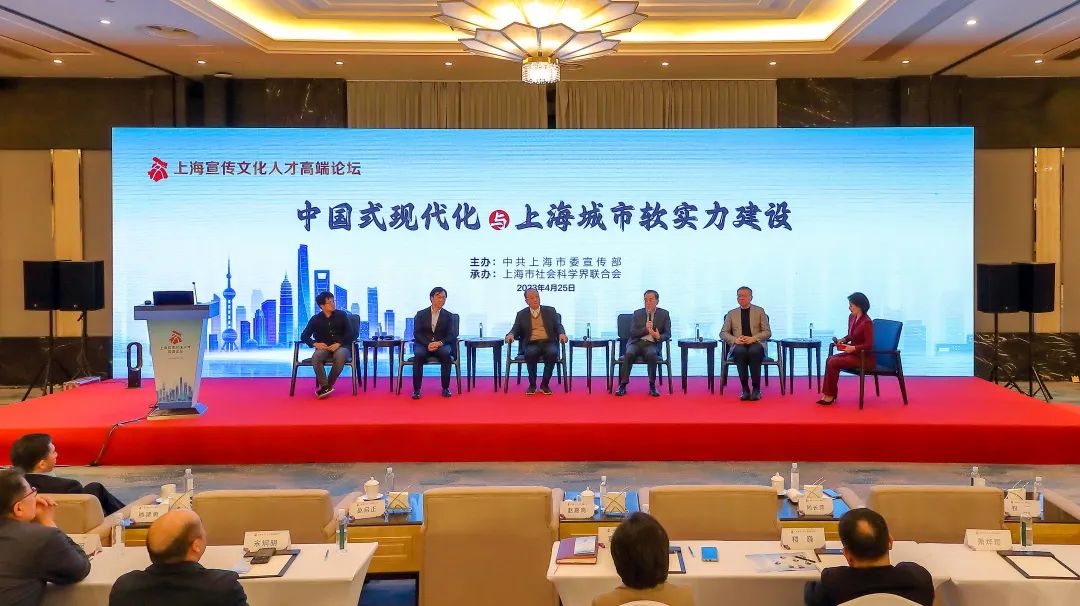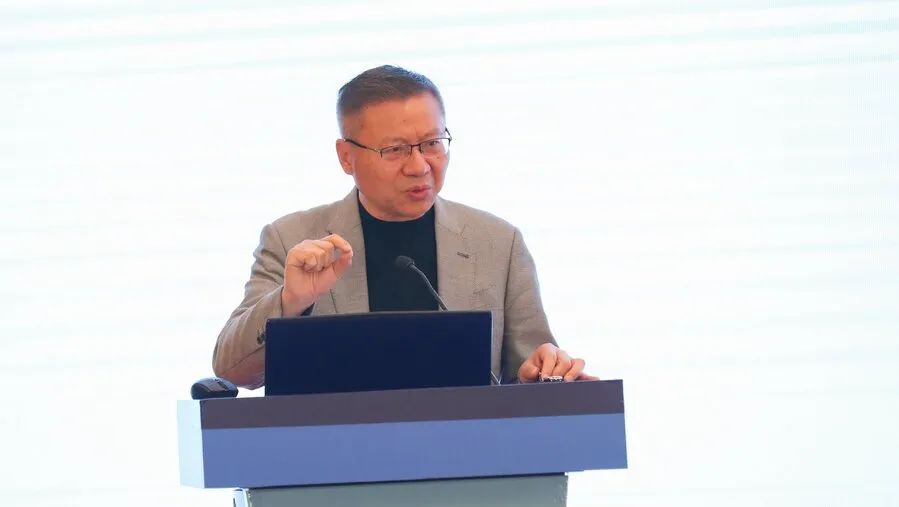Zhang Weiwei: Some Thoughts on Shanghai’s Soft Power Construction
In order to promote the construction of Shanghai as a socialist cosmopolitan cultural metropolise, build a platform for promoting culture and talent exchange, interaction and integrated development, and display and share the wisdom Shanghai cultural talents, the Shanghai High-end Forum on Promoting Culture and Talents sponsored by the Publicity Department of the CPC Shanghai Committee and hosted by the Shanghai Federation of Social Sciences Associations was held in the city on April 25th, 2023.

Focusing on the theme of “Chinese Path to Modernization and Construction of the Soft Power of Shanghai”, Zhao Qizheng (Former Director of the State Council Information Office of China), Quan Heng (Secretary of the Party Committee of the Shanghai Academy of Social Sciences), Liao Changyong (President of Shanghai Conservatory of Music), Zhang Weiwei (President of the China Institute of Fudan University), and Ma Boyong (a famous writer) delivered their keynote speeches.
The following is an excerpt from Zhang Weiwei’s keynote speech at the forum—“Some Thoughts on Shanghai’s Soft Power Construction”.

The formulation of the concept of “Chinese path to modernization” implies broader global vision and international comparison. Shanghai is a leader in such a movement of modernization, and its soft power construction is particularly important, with global significance. Regarding Shanghai’s soft power construction, I propose the following five tentative ideas for your reference.
I. Index system innovation. The existing index systems may have some significance in their respective fields. However, to strengthen the soft power of Shanghai, we need to boldly innovate the index systems so that we can tell the stories of Shanghai and China more effectively and more confidently. We should break out of the western index systems, view the outside world with Chinese people’s insights and standards, and emerge with new but practical and realistic, and more effective, index systems.
II. Narratives from “the new” to “the old”. When it comes to Shanghai, the first thing that most people think of is how modern it is. We should improve our understanding of modern Shanghai in light of its past. The 45-kilometer shore-line of the Huangpu River in Shanghai is open to the public, and the Internet and game industry in the city has impressed the world. This is the modernity of the present Shanghai, and we should identify its historical causes in the old Shanghai.
III. The more cultural narratives, the better. Cultural communication is the most extensive, and everyone can participate in it. Shanghai can comprehensively consider making a publicity matrix, selecting its old buildings, new buildings, music, games, convenient businesses, etc. to attract more and more to Shanghai and persuade them to fall in love with it. Shanghai is a vibrant city that never sleeps. If we summarize it with a cultural concept, I think it can be defined as “Along the River During the Qingming Festival coming alive in the 21st century”, which links historical inheritance with contemporary experience. (Translator’s note: Along the River During the Qingming Festival is one of the most famous painting in China, created by a Song Dynasty painter a thousand years ago.)
IV. Work creatively. Soft power construction requires creativity. Shanghai’s “Xintiandi” is a very successful project, where foreigners see China, Chinese people see exotica, young people see the past, and old people see modernity. China is a modern country, and its long history makes it distinctive from other modern cultures. Numerous Chinese proverbs piece both the old and new China together. For example, “Even brothers keep careful accounts”. In the Chinese context, the “brothers” part implies an important old value, while the “careful accounts” part signifies a modern business spirit. The combination of the two is a kind of transcendence over both the old value and the new value.
V. Establish humanities and social sciences experimental fields. To tell the stories of Shanghai and China well requires a breakthrough in the field of humanities and social sciences and institutional innovation. We might well adopt a pilot approach to establish “experimental fields” in the areas where soft power construction and communication require a breakthrough, carry out experiments on reform and innovation, and then promote them after success.
Shanghai is a city where you can see the past, the present and the future. It is also a city where modernity and tradition are closely combined, and this combination is in actuality a kind of transcendence.

